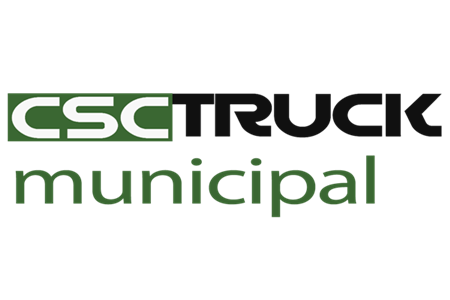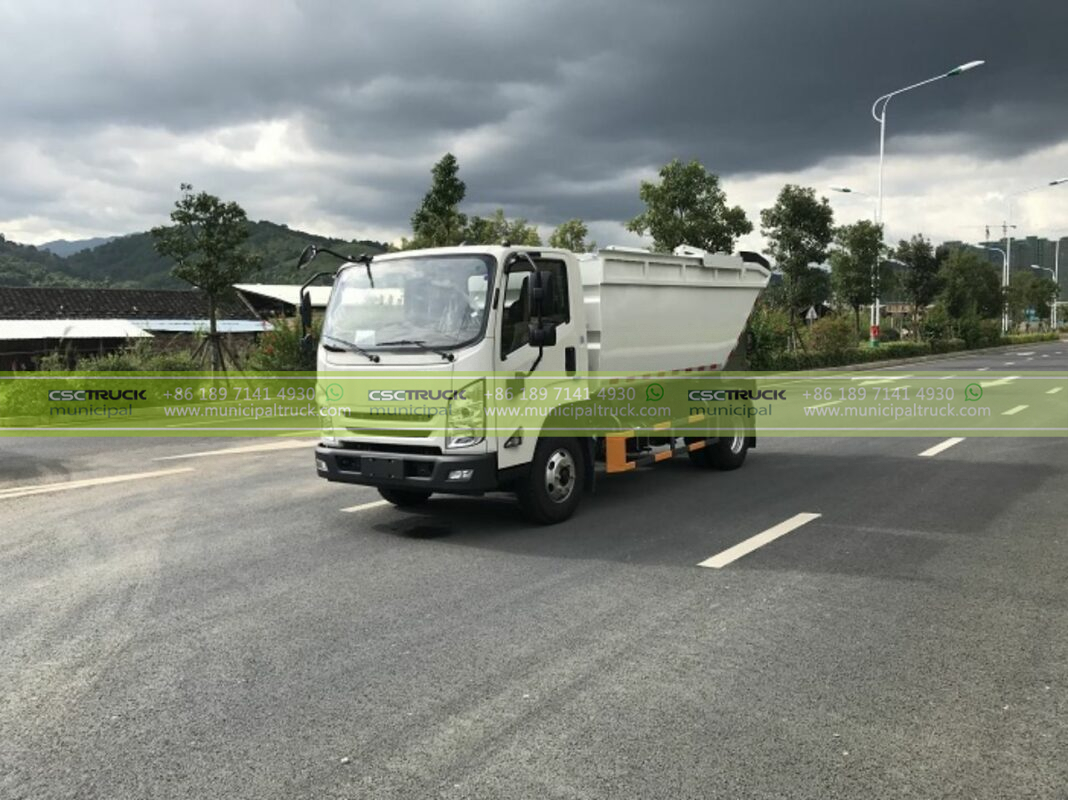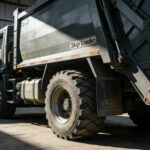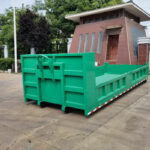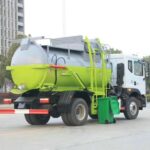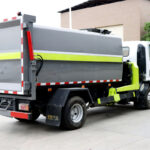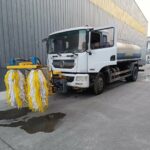In high-volume industrial environments—from manufacturing plants to distribution centers—waste management isn’t merely a sanitation concern; it’s a critical path operation impacting productivity, compliance, and profit margins. Self-tipping garbage trucks (also known as dump hoist trucks) have emerged as the backbone of efficient industrial waste collection, leveraging robust engineering to outperform traditional alternatives. Their unique design eliminates manual handling bottlenecks while integrating seamlessly with standardized containers, creating a closed-loop system optimized for speed, safety, and scalability.
Section 1: Operational Efficiency & Economic Payoffs
1.1 Minimized Dwell Time Through Automated Dump Cycles
Industrial sites generate waste at scales that overwhelm manual or semi-automated systems. Traditional rear-loaders require 5–8 minutes per stop for bin handling, worker coordination, and compaction cycles. In contrast, a self-tipper’s hydraulic hoist engages, lifts, and empties a 6–8 cubic yard container in under 60 seconds, with no operator exit from the cab. This dump cycle automation reduces collection time per stop by 80–90%, enabling a single truck to service 50+ containers in a shift—a throughput impossible with labor-intensive alternatives. For warehouses running 24/7 operations, this efficiency prevents waste accumulation in high-traffic zones, eliminating production disruptions caused by overflowing bins or congested loading docks.
1.2 Reduced Labor Dependency & Associated Costs
Labor accounts for 60–70% of waste management expenses in industrial settings. Self-tipping systems consolidate bin handling, compaction, and transport into a single-operator workflow, eliminating 2–3 ground crew members typically needed for rear-loaders or skip trucks. Automated container engagement (via standardized hooks or trunnion bars) removes human error in bin alignment, while remote-controlled locking mechanisms ensure secure attachment before lifting. This labor optimization slashes payroll costs by 40–50% per route while mitigating risks like overtime burnout, worker shortages, and training overhead—a decisive advantage in tight labor markets.
1.3 Enhanced Payload Economics & Route Optimization
Industrial waste streams—packaging, pallets, metal scrap—vary dramatically in density and volume. Self-tippers integrate load-sensing hydraulics that adjust compaction force in real-time, maximizing payload without exceeding axle limits. Onboard scales and telematics transmit weight data to fleet managers, enabling dynamic route adjustments to fill trucks to legal capacity. Compared to non-compacting hook loader trucks (which transport containers unprocessed), self-tippers achieve 2–3× greater payload density per trip, cutting fuel use and landfill fees. This payload intelligence transforms waste logistics from a fixed schedule to a demand-responsive system—emptying bins only when capacity thresholds trigger alerts, not on arbitrary timetables.
Section 2: Durability, Safety & Future-Proofing
2.1 Engineering Resilience for Extreme Environments
Industrial waste—abrasive metal shavings, chemical residue, demolition debris—demands ruggedized equipment. Self-tippers feature reinforced high-tensile steel frames, hardened cylinder rods resistant to corrosion, and sealed hydraulic systems preventing fluid contamination from dust or moisture. Thermal management packages maintain oil viscosity in foundries (-10°C) or smelters (50°C+), ensuring consistent lift cycles. Crucially, radial piston pumps deliver sustained high pressure (3,500+ PSI) without overheating during rapid-fire dump sequences—unlike gear pumps common in smaller trucks. This engineered resilience minimizes downtime in punishing environments, achieving 10,000+ lift cycles annually with >95% operational availability.
2.2 Mitigating High-Risk Workplace Hazards
Warehouses and factories rank among the most hazardous workplaces, with material handling injuries costing billions yearly. Self-tipping designs eliminate manual bin movement—the leading cause of back injuries, crush incidents, and struck-by accidents in waste operations. Container engagement occurs entirely from the cab, with cameras and proximity sensors providing 360° visibility to avoid collisions with infrastructure or personnel. Stability control systems automatically lock hydraulics if tilt angles exceed 70°, preventing rollovers during lifts on uneven terrain. By isolating workers from physical waste handling, these trucks reduce recordable incidents by 60–75%—a non-negotiable metric for compliance-driven industries.
2.3 Adaptability to Evolving Industrial Demands
As circular economy mandates grow, industrial waste streams fragment into specialized flows (recyclables, hazmat, organics). Modular self-tipper bodies support rapid configuration changes: swap compactor bodies for recyclable cages, or fit chemical-resistant poly tanks for liquid waste. Electric (BEV) and hybrid powertrains integrate seamlessly, leveraging regenerative hydraulics to extend battery range—a critical advantage as net-zero targets accelerate. Cloud-connected telematics analyze dump frequency, container fill rates, and waste composition, enabling predictive adjustments to service levels. This scalability future-proofs fleets against regulatory shifts, material innovations, and ESG reporting requirements without replacing core assets.
While hook loader trucks excel in transporting diverse non-compacted containers between sites, and skip loader garbage trucks dominate construction debris with their high-lift reach, the self-tipping garbage truck remains the undisputed champion for high-velocity, high-volume industrial waste processing. Its fusion of automation, payload density, and operator-centric safety creates an irreducible efficiency standard for environments where waste stagnation equals profit erosion. In the relentless rhythm of industry, this unsung hero ensures production lines never halt for the mundane yet mission-critical task of removing what’s been discarded. The roar of its hydraulics isn’t just lifting bins; it’s sustaining the heartbeat of commerce itself.
